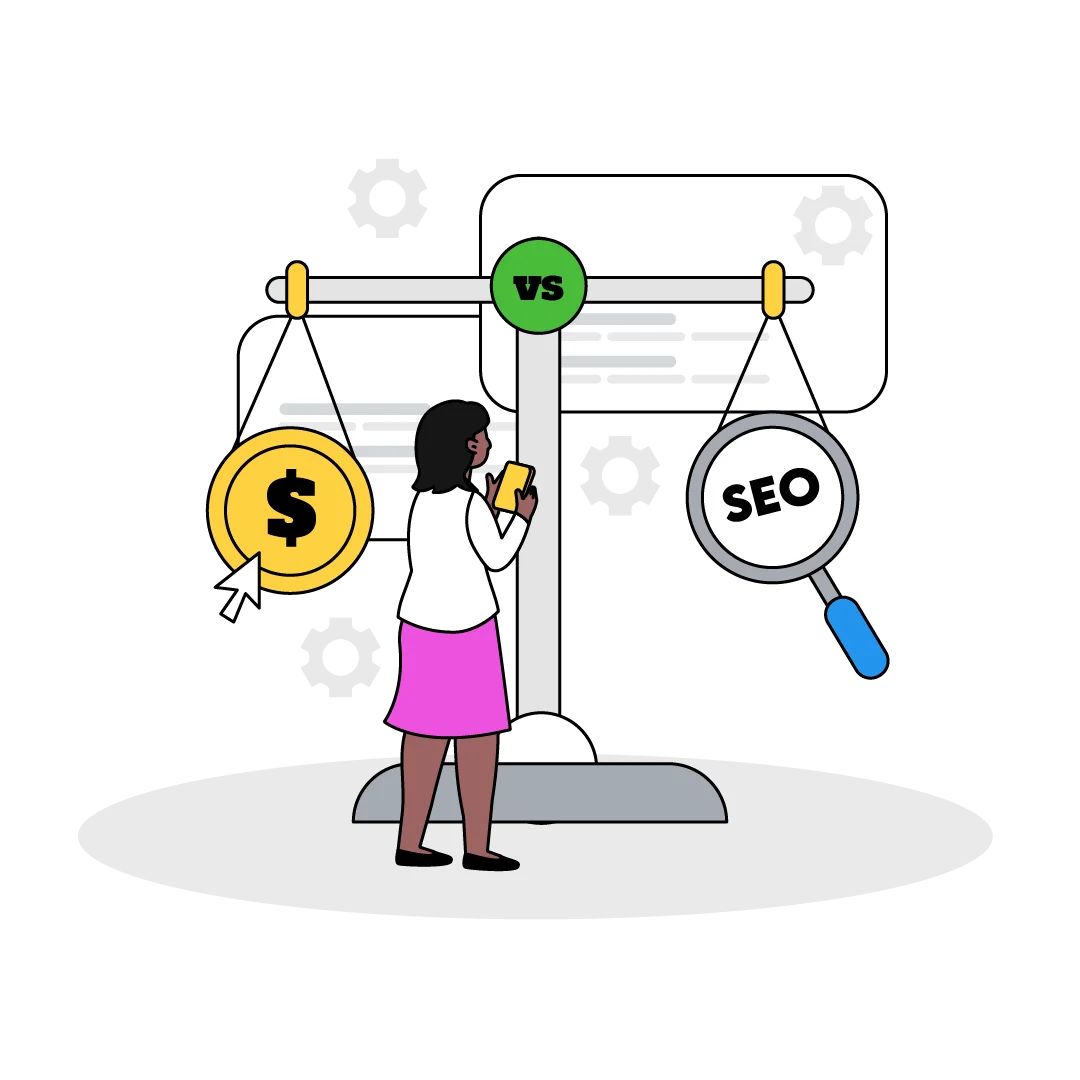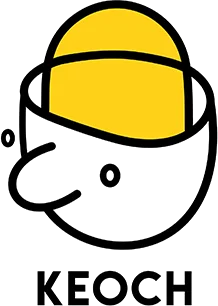How Pain Management Clinics Can Use SEO to Attract More Patients
If you’ve invested in SEO before and didn’t get the results you were promised or expected, you’re not alone. Many pain management clinics have worked with agencies or platforms that offered big claims, only to deliver confusing reports and little to show for it.
But here’s the truth: SEO is one of the most effective ways to grow your clinic and your good reputation. Not with empty buzzwords or cookie-cutter tactics, but with a strategy built around how your patients actually search.
Whether someone types “back pain doctor near me” or “pain management clinic in [City],” local SEO determines if your clinic appears or if you’re hidden beneath competitors. Even patients who are referred often search online before they ever pick up the phone.
When it’s done right, SEO builds trust, boosts visibility, and brings in steady, qualified leads, all without taking more of your time. This comprehensive guide explains the building block of SEO for pain management clinics and how to get started yourself, or with the help of a professional SEO company. Start at the top or take a look at the table of contents below to jump to a section that’s interesting or relevant to your current process.
What Is SEO and Why Does It Matter for Pain Management Clinics?
Search Engine Optimization (SEO) is the process of improving your online presence — from your website to your online listings and patient reviews — so your clinic appears higher in search engine results, especially on Google.
For pain management clinics, this means showing up when potential patients are actively searching for help. Whether they’re exploring treatment options, checking out a referral, or comparing providers in your area, strong SEO helps your clinic appear credible, visible, and easy to contact.
Reputation management is a vital part of that strategy. What patients see in your reviews and listings often shapes their first impression and their decision to reach out. That’s why effective SEO goes beyond your website to help build trust at every digital touchpoint.
How SEO Works
SEO is all about understanding what potential patients are searching for and ensuring your clinic’s website and online presence offer the best possible match. Google determines which websites to rank based on a wide range of factors, especially when it comes to health-related content.
SEO is more than keywords. Google uses a variety of signals to decide which clinics appear at the top of search results and which get buried.
Here’s what matters most:
- Relevance: Are you using the same language your patients use when they search? If someone types “sciatica specialist near me” or “help for chronic neck pain,” your website needs to clearly reflect those terms.
- Authority: Google looks at how many trustworthy websites are linking back to you. For a clinic, this could include links from local news stories, professional associations (American Academy of Pain Medicine (AAPM) or American Society of Interventional Pain Physicians (ASIPP)), or healthcare directories — all of which signal that your site is credible and worth ranking.
- Experience & Trust: Google prioritizes content that reflects real-world medical expertise, especially for health-related topics. Your bios, service pages, and blog posts should showcase your providers’ qualifications and experience. Just as important are your online reviews; they signal trust to both patients and search engines. A steady flow of positive feedback strengthens your reputation and improves your visibility.
- User Experience: If your website is slow, hard to navigate, or confusing on mobile, patients will bounce, and Google notices. A streamlined, mobile-friendly site that’s easy to use keeps visitors engaged and helps improve your rankings.
Before we get into specific strategies, it’s important to understand that these elements don’t work in isolation. SEO success comes from combining technical improvements, valuable content, and a trustworthy reputation to form a well-rounded digital presence.
Understanding Search Intent
To show up in relevant searches, your content needs to align with what people are actually looking for. Google wants to serve users the most helpful and accurate results based on their intent, whether they’re ready to book an appointment or just starting their research.
For example:
- If someone searches “pain management doctor near me,” they’re likely looking to schedule a visit soon. Your clinic should have local landing pages and a fully optimized Google Business Profile to capture this intent.
- If someone types “what causes chronic back pain,” they’re looking for information. Publishing blog posts that explain common causes and available treatments helps meet that need — and builds trust early in their decision process.
Your website should serve both types of intent: immediate action and early research. By balancing service pages with helpful educational content, your clinic can attract a wider range of potential patients and guide them toward booking an appointment.
Local SEO: The Most Powerful Tool for Clinics

For healthcare providers like pain management clinics, local SEO is essential. When someone types “pain management near me,” Google shows a “local map pack” — a list of top local providers.
To appear there, your clinic needs:
- A fully optimized Google Business Profile with accurate hours, services, and photos
- Consistent Name, Address, Phone (NAP) listings across directories
- Positive client reviews on Google and other healthcare-specific platforms
Key SEO Strategies for Pain Management Clinics

Once you understand how SEO works, it’s time to take action. These are the foundational steps your clinic can take to improve visibility in local searches and connect with more of the patients who need your care.
Now that you understand how SEO works, let’s walk through the most important steps your clinic can take to improve local visibility and reach more patients in your area.
1. Google Business Profile Optimization
Your Google Business Profile is one of the most influential tools for local SEO. It’s often the first thing potential patients see when they search for your clinic.
- Claim and complete your profile
- Add service descriptions and photos
- Ask happy patients to leave reviews
2. Dedicated Service Pages
Search engines and patients both respond better to specific, focused content. Creating pages for individual services helps your clinic show up in targeted searches.
- Build separate pages for each treatment or specialty (e.g., epidural steroid injections, neuropathic pain treatment)
- Use patient-friendly language that reflects common search terms
3. Clear, Accessible Contact Info
Patients should never have to dig for your contact details. Clear and visible information builds trust and makes it easier for people to take the next step.
- Ensure your phone number and address are easy to find on every page
- Include directions and parking info for each location
4. Mobile-Friendly Website Design
Most patients search from their phones, so your website needs to look good and function well on mobile devices.
5. Content That Builds Trust
Educational content does more than inform, it builds authority. It shows potential patients that you understand their pain and know how to help.
- Publish blog posts that answer common questions: “What is spinal cord stimulation?” or “What to expect at your first visit.”
- Highlight your physicians’ credentials, treatment philosophy, and patient success stories.
6. Reputation Management
Your online reviews and directory listings are extensions of your brand. Keeping them accurate and professional can make or break a patient’s decision to call.
- Monitor and respond to reviews
- Encourage satisfied patients to share their experience
- Address negative feedback with professionalism and transparency
- Keep your clinic’s listings up to date across Google, directories, and healthcare platforms
On-Page SEO for Pain Management Clinics
On-page SEO refers to the structure, layout, and content of your website — the core elements that help both patients and search engines understand what you do and how to contact you.
Site Structure
A clean, well-organized website makes it easier for Google to crawl your site and for patients to find what they’re looking for. Your site should have a logical hierarchy with clearly labeled pages that reflect your services, team, and locations.
About Page
Your About page helps build trust. Highlight your clinic’s mission, provider credentials, and the experience that sets your practice apart. Including professional photos and a personal message can also help patients feel more connected before they even call.
Service Pages
Create individual pages for each of your core services. This improves your chances of ranking for specific search terms like “nerve pain treatments” or “back pain injections.” Use language your patients would search for, and include FAQs or common concerns when possible.
Optimizing Content for SEO
Great content is essential for SEO — but it’s not just about what you say, it’s how you say it. Optimized content helps search engines understand your pages and ensures potential patients can easily find what they need.
Keyword Strategy
Use patient-friendly keywords that reflect how people actually search. Tools like Google Keyword Planner or SEMrush can help you identify popular search terms related to pain management. Incorporate these terms naturally into your page titles, headings, URLs, and throughout your content.
Clear Structure
Break up your content into short paragraphs, headings, and bullet points. This not only improves readability for visitors, but also gives Google clear signals about your content’s organization.
Page Titles and Meta Descriptions
Every page should have a clear, keyword-rich title and a meta description that accurately summarizes the content. This is what patients see in search results, so keep it relevant and compelling.
Internal Linking
Link related content together — for example, connect your “Back Pain Treatments” service page to a blog post about managing lower back pain. This helps both search engines and users navigate your site more easily.
Technical Elements
Include alt text on images, use keyword-rich URLs, and make sure your site loads quickly. These behind-the-scenes elements contribute to better rankings and a smoother patient experience.
What To Avoid: Common SEO Pitfalls

Even with the best intentions, some SEO practices can do more harm than good. Avoid these common mistakes to make sure your strategy stays on track:
- Generic strategies that ignore the needs of medical providers
- Keyword stuffing or spammy content that turns off patients
- Neglecting mobile usability
- Forgetting to track results — you should know what’s working and what’s not
PPC vs. SEO: Why You May Need Both

While this guide focuses on SEO, Pay-Per-Click (PPC) advertising can also play an important role in your clinic’s marketing strategy. PPC ads, like those at the top of Google search results, offer instant visibility for key terms like “pain management doctor near me.”
Unlike SEO, which builds momentum over time, PPC delivers immediate results. It’s especially helpful for:
- Promoting new clinics or services
- Targeting competitive keywords
- Filling appointment gaps quickly
That said, PPC only works while you’re actively paying for ads. SEO, on the other hand, compounds over time and delivers ongoing traffic without the same recurring costs. When used together, SEO and PPC can give your clinic both short-term results and long-term growth.
FAQs About SEO for Pain Management Clinics
How long does SEO take to work?
SEO is a long-term strategy. While you may start seeing small improvements in a few weeks, significant gains usually take 3–6 months or more. The key is consistency — regular updates, fresh content, and technical upkeep help maintain momentum.
What’s the difference between SEO and PPC?
SEO focuses on improving your organic (unpaid) search rankings. Pay-Per-Click (PPC) ads, by contrast, offer immediate visibility for paid terms but stop working the moment you stop paying. A healthy marketing strategy often includes both.
Should I hire an SEO expert for my clinic?
If you don’t have time to stay current with search algorithm updates, keyword trends, and technical SEO best practices, it’s smart to work with a healthcare-focused SEO partner, like Keoch. This ensures your strategy is built for your industry and gets results without adding work to your plate.
How important are patient reviews for SEO?
Extremely important. Reviews signal trust and relevance to Google, and they play a major role in a patient’s decision to contact you. The more positive, recent reviews you can gather (and respond to), the better your chances of ranking well locally.
SEO That Works for Pain Management Clinics
At Keoch, we specialize in SEO for healthcare providers, including pain management clinics. We understand how your patients search, what builds trust, and how to create a digital presence that works for your practice.
Whether you’re a solo physician with one office or managing multiple locations, we help you show up in the right searches and turn clicks into calls.
Interested in working with us? Contact Keoch today to learn more about our SEO services for pain management clinics.







